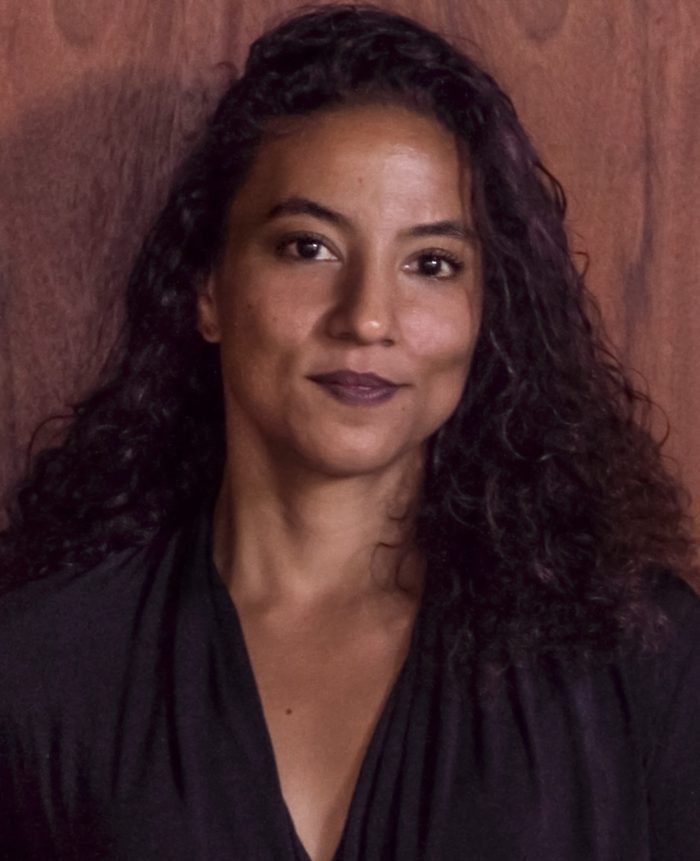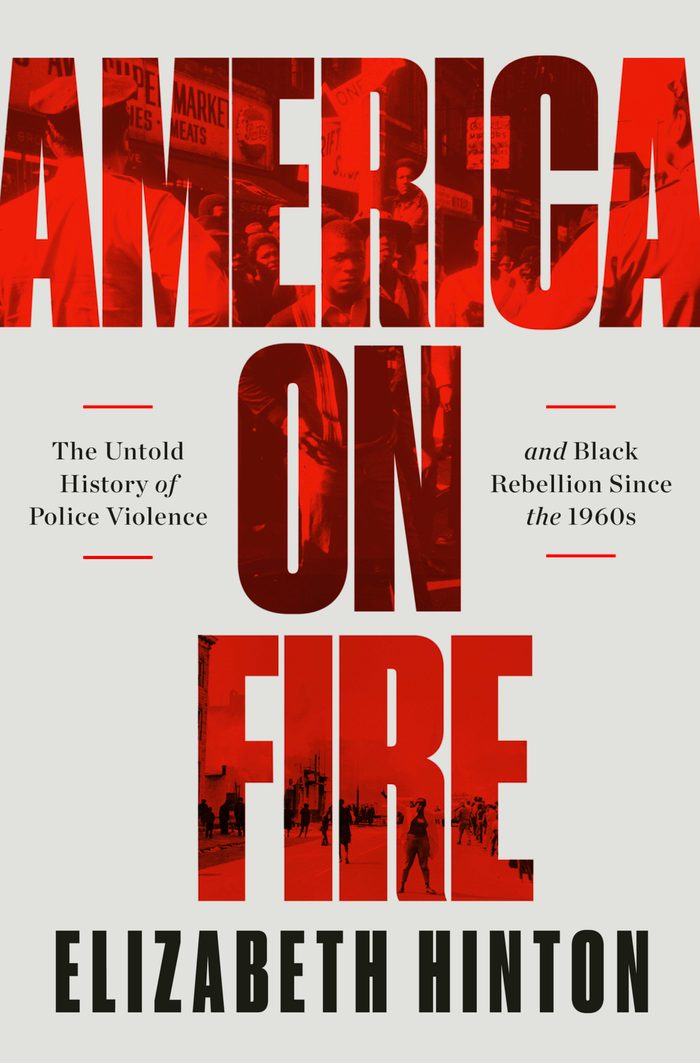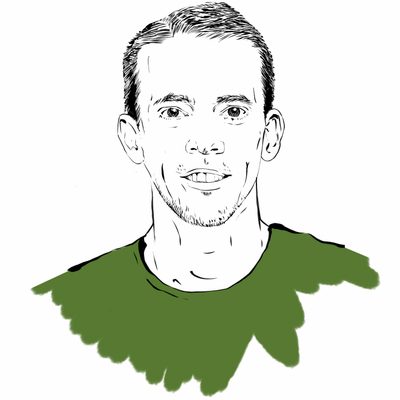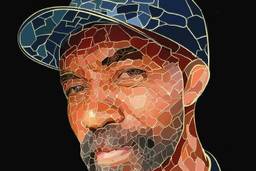The Deep Downward Spiral of Police Violence and Rebellion, Explained
A conversation with Elizabeth Hinton, author of “America On Fire: The Untold History of Police Violence and Black Rebellion Since the 1960s.”
Hamilton Nolan

No scholar in America understands the roots of the past year’s anti-police protests better than Yale professor and historian Elizabeth Hinton. Her first book, From the War on Poverty to the War on Crime: The Making of Mass Incarceration in America, explored the political and policy roots that led to our era of mass incarceration. Her new book, America on Fire: The Untold History of Police Violence and Black Rebellion Since the 1960s, examines the underlying causes of police brutality and the rebellions against it by Black Americans over the past 50 years.
In These Times spoke to Hinton about racist power structures, government indifference, and how to break out of cycles that our nation has been trapped in for decades.
Your book discusses a fundamental cycle that drives rebellions against police violence. Tell our readers what that cycle is.
Elizabeth Hinton: It is the cycle of police violence and community responses to that violence. We see a recurring pattern of these political protests, which are of course rooted in socioeconomic conditions, but which are nearly always precipitated by police contact or exceptional moments of police violence. In the ’60s and ’70s in particular, as police forces are expanding and militarizing, officers would frequently interact with residents and interrupt people as they went about their daily lives. From the perspective of many residents, these kind of frequent incursions over time, and arrests for minor things that would never be enforced in middle class or white communities, were experienced as violence.
There’s the cycle of rebellion itself, and then there’s the larger cycle of how, in response to this community violence or political violence, the solution for prevention becomes not investing in other institutions in the community, but continuing to support and expand the policing and surveillance of the community. It’s a cycle of interaction, but it’s also a policy cycle that we’ve been stuck in since the civil rights period and its immediate aftermath.
The time frame of this book overlaps with the time frame of your first book, which detailed the roots of America’s “War on Crime,” beginning during Lyndon Johnson’s administration. Are the two things related?
Hinton: Yes. This moment during the Johnson administration and during the mid to late 1960s is really important. Initially, the “Great Society” carrot and the stick approach of liberal social policy to dealing with the impact of racial discrimination and inequality was the War on Poverty — that was the carrot — and then the stick, the policing and surveillance programs that were part of the War on Crime. The war on poverty, importantly, did not represent a major structural transformation in American society, because of the pathological understanding that policymakers had about Black poverty and crime, deeply influenced by social scientists like Daniel Patrick Moynihan, who recognized the socioeconomic factors that led to disparate rates of Black poverty, but ultimately argued that Black poverty was a problem of Black behavior. So this pathological understanding gave policy makers a kind of out, to fight poverty on the cheap. Johnson’s Council of Economic Advisers said, “if poverty is a pathological problem and not a structural problem, then what we need to do is help the disadvantaged help themselves,” in their words.
In the absence of the necessary socioeconomic changes that both the mainstream civil rights movement, radical militant organizations, and people that participated in the rebellions were calling for, the problems of poverty, inequality, and crime worsened. And increasingly, police became the only solution.
You have an entire section on the many decades worth of “commissions” which are always formed to investigate each rebellion, which seem to constitute their own cycle of failure. Why have all of these governmental commissions failed to really accomplish anything?
Hinton: After many of the rebellions, the state or local human relations commission would hold hearings and investigate what happened and recommend solutions. They always pointed to the larger structural issues at play. But for many commissions, they explained the violence as being tied to this Moynihan-ian concept of “alienation” — the alienation of Black youth compelled them to embrace these violent tactics. That analysis then depoliticizes the rebellions. It makes them about behavior. That pathological interpretation not only feeds into the links between rebellion and criminality, or rioting and criminality, but also is how the public and scholars have understood the rebellions since.
The other piece of it is that there’s been an ongoing resistance to really making the structural changes that are necessary for solving these problems at their root. Again and again, you see policy makers, even conservative ones, recognizing that “we need a jobs program, we have to improve our school system, but right now we need law and order.” There’s an acknowledgment that the long term solution is actually investing in a different way into the communities that are overpoliced. They’ll pay lip service to it, but they’re unwilling to enact the policies that are necessary. And absent that different investment, the cycle of police violence, and the cycle of liberal responses and inaction will continue.

Would it be possible to build a commission like this that would actually work, if it had enforcement power to enact its own recommendations? Or is it just time to admit that the commissions have been done already, and move on?
Hinton: I think the commissions often become a stalling tactic. They make it appear as though presidents are taking action, particularly on racial issues. So it takes a couple years for these commissions to do their work, and then they produce recommendations, and afterwards it’s very easy to ignore. We know what the solutions are. We don’t need another commission.
What role did you see police unions playing in this entire dynamic?
Hinton: The other thing that’s happening in this post-civil rights period that’s so crucial is, alongside the increasing professionalization of police that is part of the war on crime, we also see the [growing] power of police unions, which is part of the reason why it’s so difficult to hold officers accountable, but also to challenge the power and the budgetary allocations police receive. I think police administrators often end up leaning on the police union as a way to explain why they can’t implement certain changes or reforms within the department. They say, “I support this, but the union is the union.” I think it’s kind of a crutch, even among progressive police chiefs, that ends up preventing change.
But as we just saw in Ithaca, I don’t think these unions are monolithic, or that they can’t understand why embracing a new approach to public safety will improve their own lives and jobs. Because of the disinvestment from social welfare programs, many officers will tell you “We have to handle all this stuff that we don’t want to handle.” If we were creative about how we’re defining public safety, and treating it as a public health issue, and involving community groups in fostering public safety, as Ithaca shows us, it’s possible that we could get police unions on board.
You write about the history of white vigilantes working hand in hand with law enforcement. When you see the Proud Boys or the Oath Keepers today, do you see that as a continuation of that history?
Hinton: Certainly. It’s a continuation of a history that’s been part of this country since its founding. It’s also the way in which the violence of the Proud Boys and similar groups gets treated, in relation to protesters for racial justice. It reflects, from the white establishment, what kind of violence is legitimate, and what kind of protest is legitimate. And we see that all the way down to January 6. For much of the history of white vigilante or supremacist terrorism, police departments have either been actively involved, or deeply complacent. We’re just beginning to understand with respect to the attack on the Capitol how many law enforcement officers and military personnel were involved.
You also note that more white people are participating in the current wave of Black Lives Matter protests than has been the case in previous waves of protests and rebellions. Why do you think that’s happening?
Hinton: I think there’s a rising generation who are fed up with the policy choices in general that have been made in the post-civil rights period. They want to see and bring about a different kind of governance, because they know that the system is not working. One of the things that we saw last summer is really interesting coalitions between LGBTQ+ activists, Black Lives Matter activists, climate change activists, coming together to say, “All of our struggles are linked, and we want and deserve better than this continued investment in policing and prisons at the direct expense of programs that would foster a far greater public good.”

When you look at the mainstream national politics of today, we can see that we’re already deep into the backlash cycle against BLM, which started very soon after the initial protests. Is there any way for us to break out of this political cycle?
Hinton: This is the longer, protracted struggle. If we’re going to realize the structural transformation that the Kerner Commission recommended more than 50 years ago, that are necessary, that’s going to be a hearts-and-minds and political education struggle. It’s not necessarily impossible. When our true history, one that emphasizes the racial and class oppression that has shaped the institutions of this country historically — when that’s under attack the way that it has been, we have a very long way to go. But that doesn’t mean we stop fighting. As last summer demonstrated, the majority or a near majority of Americans recognize the harms of racial inequality and exploitation historically. They want to live in a different kind of country.
What keeps me hopeful in these dark moments when it feels like democracy is on the brink of complete collapse in this country is my students. Most of the protests this summer were really fueled by Generation Z, and young people who came of age during the Trump administration and Covid, and they don’t want to live in this kind of society. I’m hopeful that they will continue to keep the pressure on, to bring about the different society that so many of us want — and that is necessary.
Hamilton Nolan is a labor writer for In These Times. He has spent the past decade writing about labor and politics for Gawker, Splinter, The Guardian, and elsewhere. More of his work is on Substack.








